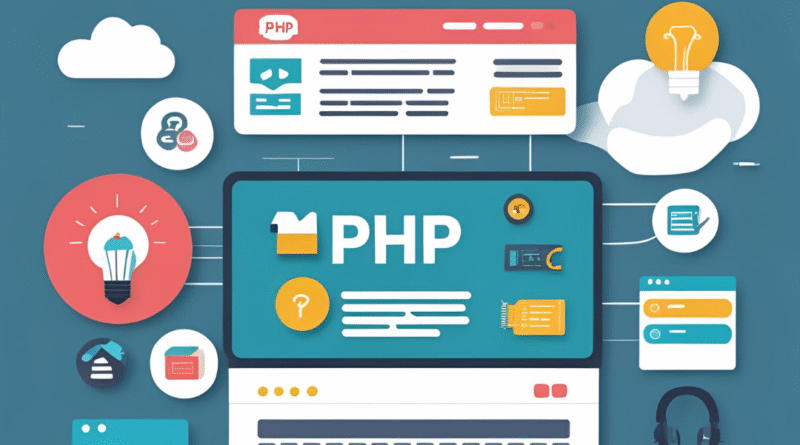PHP Superglobals & Forms Handling:- Form validation and sanitization (filter_var(), htmlspecialchars())
Protecting Your Forms: A Simple Guide to PHP Validation and Sanitization
Building a website often means letting users input information through forms – whether it’s their name, email, a comment, or something else. While it’s great to interact with users, it’s also a big responsibility to make sure the data they send is safe and clean.
Think of it like this: would you let someone messy into your clean house without wiping their feet first? Probably not! The same goes for data entering your website. If you don’t clean and check it, you could face big problems like security breaches or broken layouts.
In PHP, we have some fantastic tools to help us with this: validation and sanitization.
What’s the Difference? Validation vs. Sanitization
It’s easy to get these two confused, but they have distinct jobs:
- Validation: This is about checking if the data is correct and meets your rules. For example, is an email address actually in the right format (like
name@example.com)? Is a phone number really just numbers? If the data doesn’t pass your rules, you probably won’t accept it. - Sanitization: This is about cleaning the data to remove anything potentially harmful or unwanted. Imagine someone tries to put a secret code or a nasty piece of script into your comment box. Sanitization helps strip that out, making the data safe to store or display.
You need both! Validation ensures the data is what you expect, and sanitization ensures what you do receive is harmless.
Your PHP Superheroes: filter_var() and htmlspecialchars()
PHP gives us two incredibly useful functions that make validation and sanitization much easier:
1. filter_var(): Your All-in-One Data Checker and Cleaner
The filter_var() function is a powerhouse. It can validate and sanitize various types of data with very little effort.
Let’s say you have an email input. You want to make sure it’s a real email address and clean it up just in case.
PHP
<?php
$user_email = $_POST['email_input']; // Get the email from your form (example)
// 1. Sanitize the email (remove unwanted characters, e.g., spaces at the beginning/end)
$sanitized_email = filter_var($user_email, FILTER_SANITIZE_EMAIL);
// 2. Validate the sanitized email
if (filter_var($sanitized_email, FILTER_VALIDATE_EMAIL)) {
echo "Email is valid and sanitized: " . $sanitized_email;
// Now you can safely use $sanitized_email, like storing it in a database
} else {
echo "Invalid email format.";
}
?>
In this example:
FILTER_SANITIZE_EMAILremoves characters that are not valid in an email address.FILTER_VALIDATE_EMAILchecks if the format of the email is correct.
filter_var() has many more filters! You can validate URLs (FILTER_VALIDATE_URL), integers (FILTER_VALIDATE_INT), and even filter out specific characters. It’s incredibly versatile.
2. htmlspecialchars(): Guarding Against Nasty Scripts
While filter_var() is great for general cleaning and validation, htmlspecialchars() is your specific shield against a common attack called Cross-Site Scripting (XSS).
Imagine someone types this into your comment box:
HTML
<script>alert('You\'ve been hacked!');</script>
If you just display this directly on your webpage, the browser will run that script, causing a pop-up (or worse, stealing user data!).
htmlspecialchars() comes to the rescue. It converts special characters like <, >, &, and " into their HTML “entities.” This means the browser will see them as plain text rather than active code.
PHP
<?php
$user_comment = $_POST['comment_input']; // Get the comment from your form (example)
// Sanitize the comment for display
$safe_comment_for_display = htmlspecialchars($user_comment, ENT_QUOTES, 'UTF-8');
echo "Your comment: " . $safe_comment_for_display;
?>
Now, if someone tries to inject that script, htmlspecialchars() will turn it into:
HTML
<script>alert('You've been hacked!');</script>
When the browser sees this, it displays <script>alert('You\'ve been hacked!');</script> as plain text, harmlessly, instead of running the script.
Important Tip: Always use htmlspecialchars() just before you display user-provided data back on your webpage. This is your last line of defense against XSS.
Putting It All Together
A good approach is to:
- Sanitize incoming data using
filter_var()or other methods to clean it up. - Validate the sanitized data using
filter_var()to ensure it meets your requirements. - Sanitize again with
htmlspecialchars()before displaying any user-submitted data back to the browser.
By consistently applying these techniques, you’ll make your forms much more robust and your website significantly safer. Don’t skip these crucial steps – they’re your best friends in building secure PHP applications!




